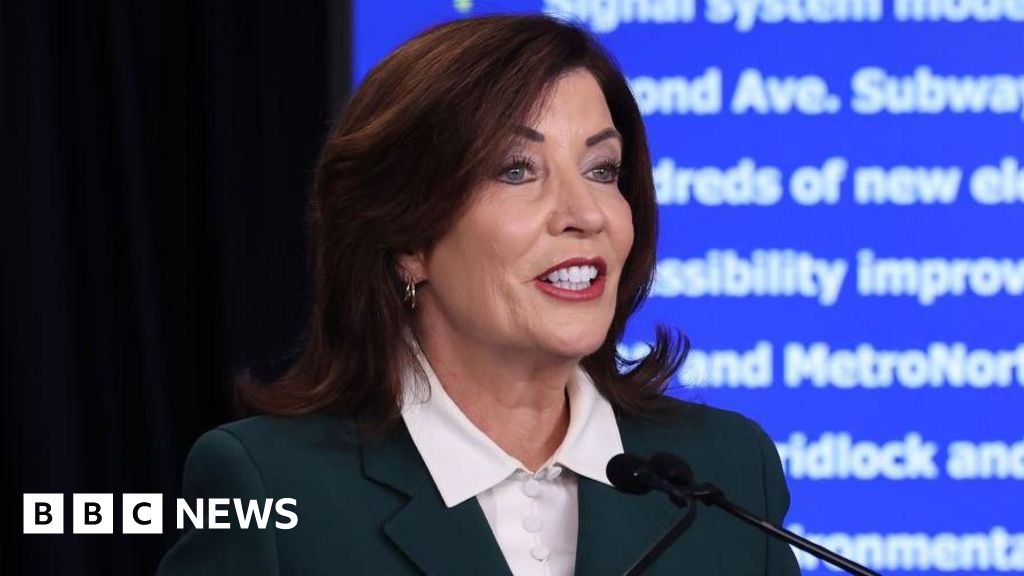ARTICLE AD BOX
By Jake Horton
BBC Reality Check
Image source, Getty Images
Abortion services for millions of American women could be restricted, as the US Supreme Court considers whether to allow some states to ban the procedure in earlier stages of pregnancy.
At the moment, in the US, abortion can take place about 24 weeks into pregnancy, but this could be reduced significantly due to legal challenges by some states.
So if the law changes, what might the impact be?
Who could be most affected?
Limiting abortion access would disproportionately impact younger women, poorer women and African-American women, as these groups are more likely to seek an abortion, according to official data.
The majority of women having abortions in the US are in their 20s.
About 57% of reported abortions in 2019 were performed on women between the ages of 20 and 29.
The majority of states report abortion data to the US Center for Disease Control (CDC), but a handful don't.
Rachel Jones, a senior researcher at the Guttmacher Institute, a pro-choice research group told the BBC: "The typical abortion patient is in their 20s, doesn't have a lot of money and has one or more children."
Research by the institute has shown that 75% of women in the US who have an abortion are classified as low income or poor (based on official US poverty definitions).
Dr Antonia Biggs, a researcher at the Bixby Center for Global Reproductive Health says: "Structural inequities - including living on low incomes and limited access to health insurance - all contribute to the higher rates of abortions among people of colour."
Black people make up 13% of the US population, but black women receive more than a third of the country's reported abortions and Hispanic women about a fifth.
Over the last ten years, fewer women have been having abortions across the US, according to the latest statistics from the CDC.
The number of reported abortions dropped by almost 18% between 2010 and 2019.
In 2019, there were about 630,000 abortions reported in the US, compared with more than 765,000 in 2010.
Why is the number of reported abortions falling?
Kimberley Lufkin of the Guttmacher Institute says: "The declining rate could be for a host of reasons - including increased access to contraceptives, as well as declining sexual activity."
There's also been a reduction in the birth and pregnancy rate in the US overall during the last decade.
In addition, abortion restrictions are on the rise in states across the US, limiting women's access to the procedure.
Currently states cannot legally ban abortions before foetal viability is established (when foetuses can, theoretically, sustain life outside the womb).
However, state lawmakers can put measures in place which make it more difficult to have an abortion.
Image source, Reuters
Image caption,An anti-abortion protestor in Houston tries to intercept a visitor to a clinic
But a case currently before the Supreme Court could change this, allowing bans before this period (24 weeks).
Some states have laws in place which punish doctors who perform abortions, and others don't allow abortions to be included among the government-assisted healthcare services which people with low incomes can access.
Women can travel to a different state where there are fewer restrictions, but this can throw up logistical and financial issues.
So far this year, a record amount of abortion restrictions have been enacted in states across the US. Consequently, in a handful of states - including Texas and Ohio - abortion clinics have been closing.
One study estimated that each year more than 4,000 women in the US are denied an abortion because of restrictions and so continue with unwanted pregnancies.
Greater restrictions in certain states means people have to travel to less restrictive states, such as New York and Illinois, to have an abortion.
The national average rate of abortions is about 11 abortions per 1,000 women aged 15-44 years, but some states like Wyoming and Missouri have a much lower rate.
The majority of residents in these two states travel out of state for abortions: in Wyoming, 94% of residents go out of state and in Missouri, it's 86%.

 2 years ago
102
2 years ago
102








 English (US)
English (US)